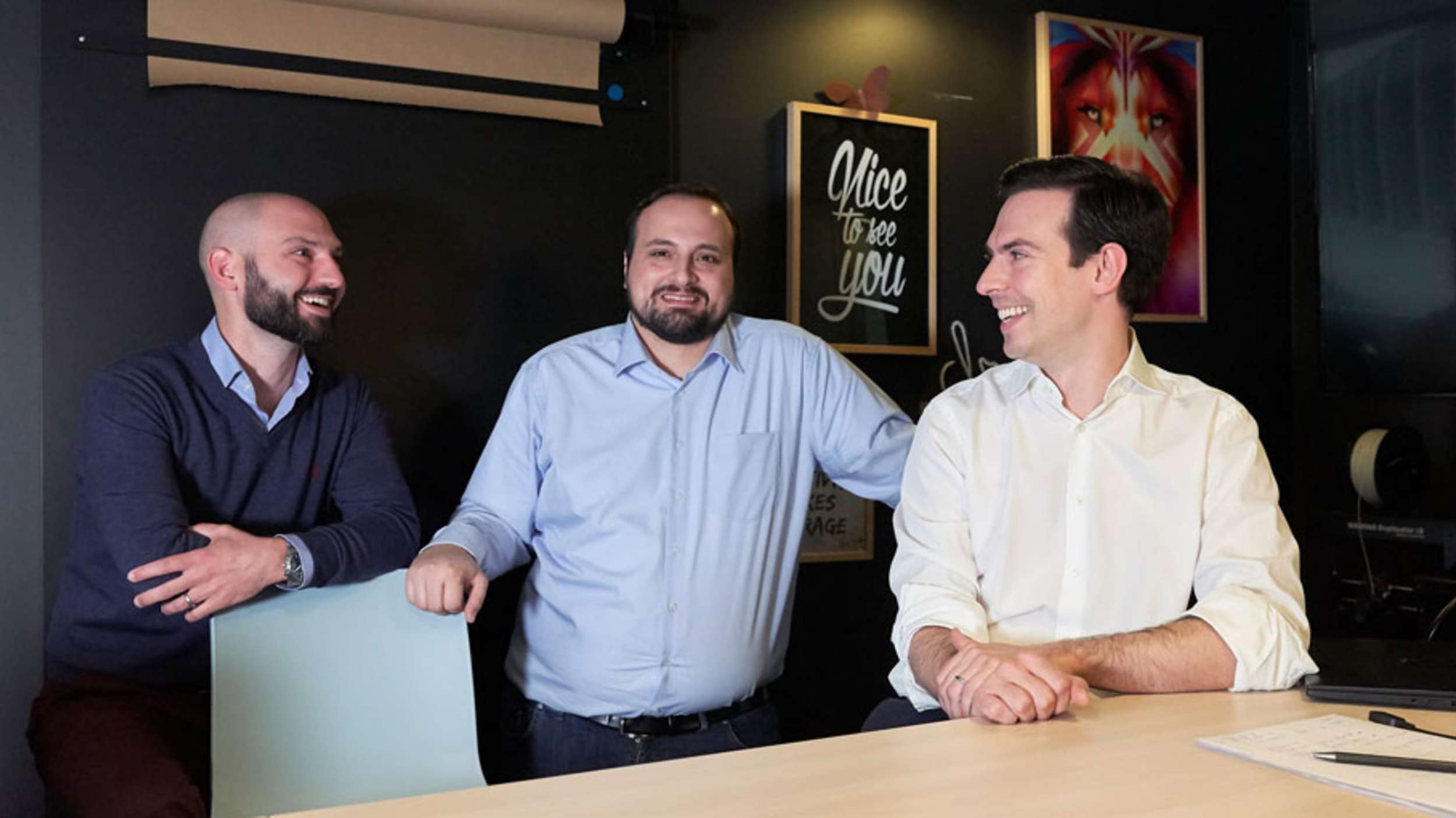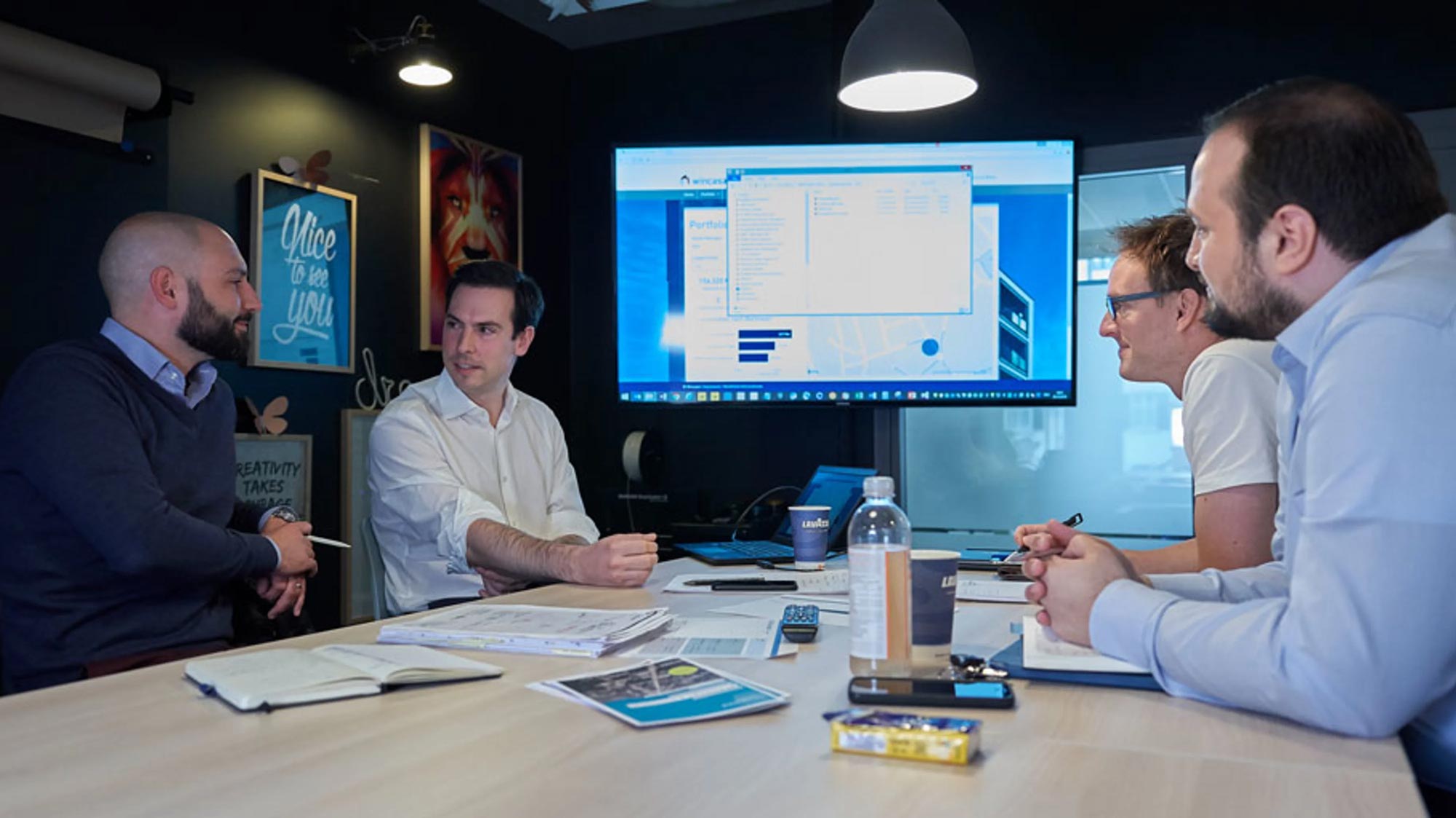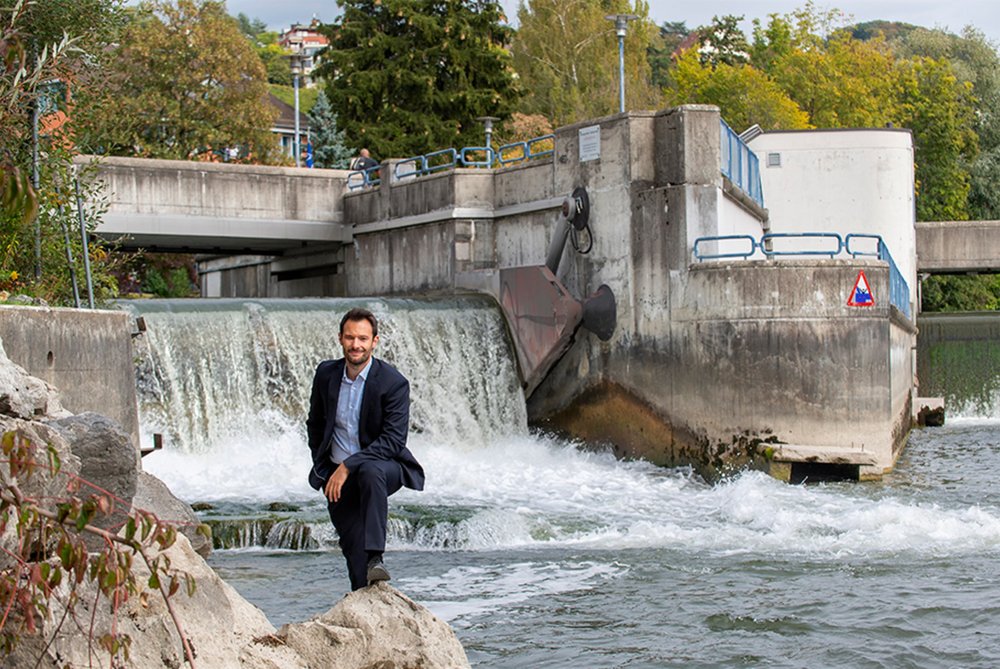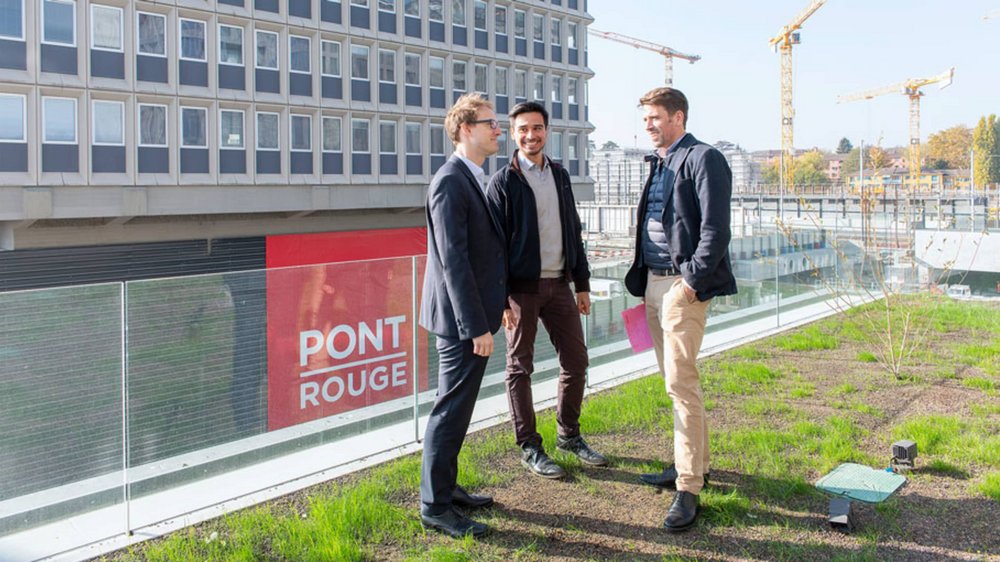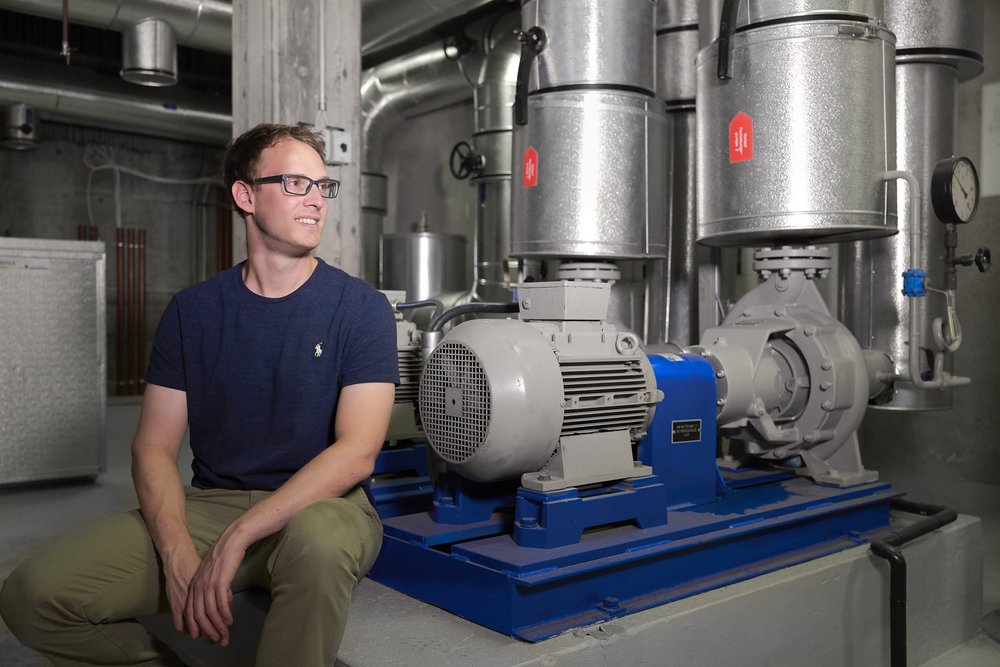Story Detail
Sights set on the target
Wednesday morning, just before nine, at Wincasa in Zurich. Martin Pfenninger, Head of Project Management and Sustainability, is the first to enter the brainstorming room. Here, among the swing, the whiteboard and the Lego figures, a discussion is set to take place on a key question relating to sustainability: what contribution can Swiss Prime Site and Wincasa make to meeting the needs of the Energy Strategy 2050 and the associated CO2 reductions, and thus to achieving the internationally agreed two-degree target? Approximately one quarter of Swiss carbon emissions are produced in the real estate sector. That means that this particular branch of the economy, involved in the construction and operation of buildings, has a big influence on the climate. Swiss Prime Site is aware of this and has tasked Pfenninger with quantifying all the current and future measures for reducing carbon emissions, and visually illustrating them in a reduction pathway.
A challenging task, for which the expert has brought in support – from Reto Camenzind, Head of Data Science, and Serdar Oenel, Project Manager for Research and Strategy. Today’s kick-off meeting is intended to lay the foundations of the project. They want to approach the issue together. Over the coming weeks and months, the idea is to develop a forecast for CO2 emissions in the Swiss Prime Site portfolio and, in doing so, to deliver an important contribution to the company’s next sustainability report.
From review to forecast
Not only has Swiss Prime Site's sustainability report initiated the project, but the published data, initiatives and targets also provide the basis for developing and illustrating the CO2 reduction pathway. Over the past few years, for example, all ecological values have been recorded transparently, and measures such as conforming with the two-degree target have been adhered to. The EC/BO project, started in 2012, not only brought transparency to the real estate portfolio with regard to energy consumption and greenhouse emissions, but also provided a good starting point for Pfenninger and his team. The operational improvements launched at the same time allowed the company to implement some initial reductions, which were mapped in the reduction pathway that has already been published. With the update to the roadmap, all future initiatives and efforts should now be quantified and illustrated. Swiss Prime Site is therefore venturing to take a look into the future – not only at the next ten years, but even further beyond.
The aim is to create a tool that the management team can use as a basis for making decisions. All future decisions should be made with an increased focus on aspects of environmental sustainability. But where to start with an undertaking on this scale? It is essential to make things tangible and to define practical steps.
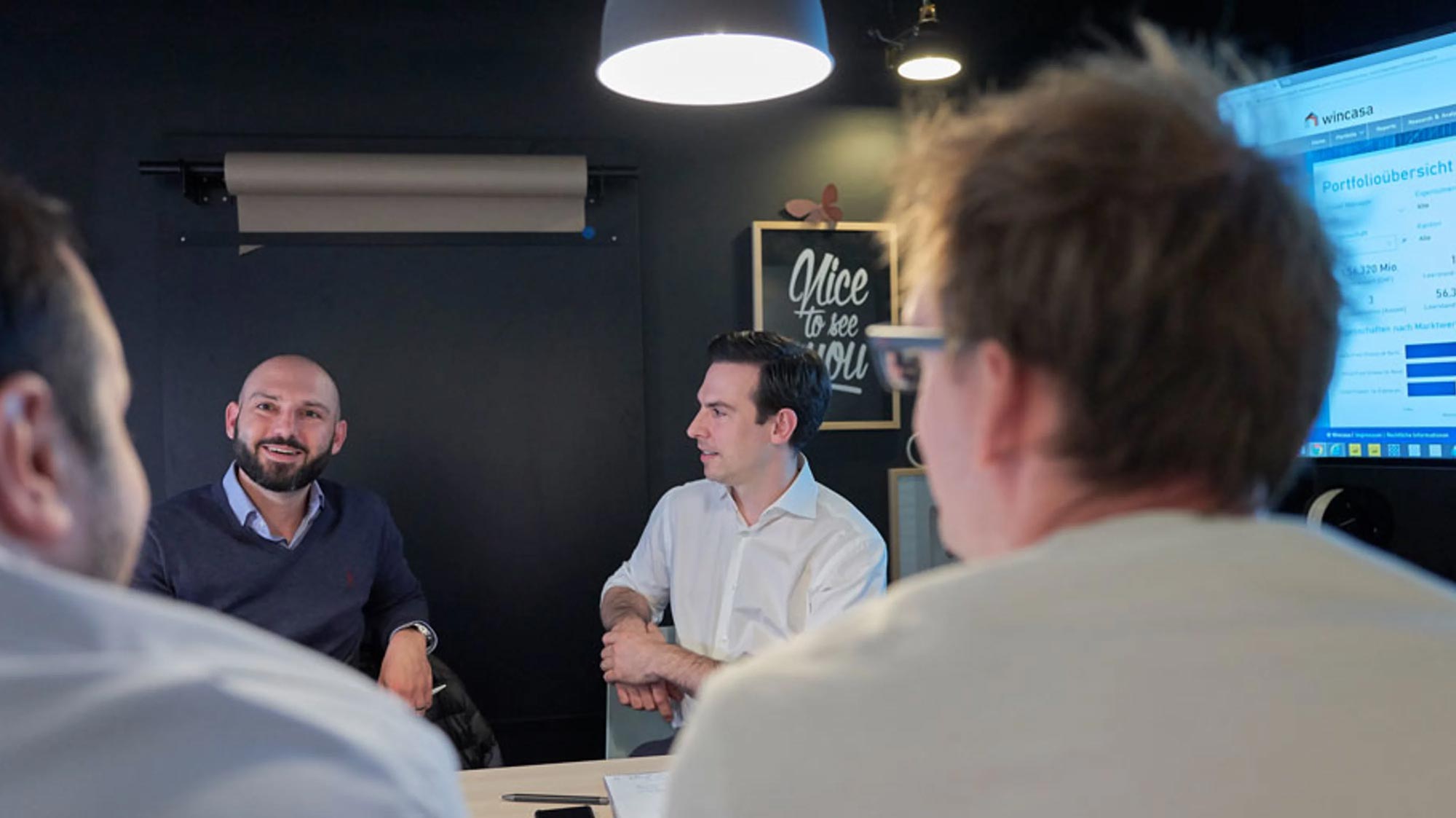
That is why these three experts have assembled today, who are well informed about sustainability, data and development. This knowledge is vital, not only for approaching the issue, but also for developing a concrete solution. «Our first step is focussed on mapping the current portfolio and visualising to what extent we’re on the path we want to be on, and which of our planned measures have what impact», explains Pfenninger. The key ways of making adjustments to influence a building’s greenhouse emissions are optimisation, improving efficiency and substituting fossil fuels. The first can be achieved, for example, by adjusting the control parameters of the building services. Efficiency can be improved within the context of renovations during the life cycle of a building. And renewable energy, such as hydropower, can be used to replace fossil fuels. «The time frame poses a real challenge», says Pfenninger. «Generally we work with management and maintenance plans covering the next ten years. The roadmap for the two-degree target extends far beyond that. Although we can make relatively accurate estimates for each individual building for the next ten years, the years following that are not defined.» Wincasa therefore has to work with assumptions about the durability and life cycle of building components and real estate. Take an example: if there is a property that has no comprehensive renovation scheduled in the next ten years, we must assume there will be a renovation at a future point in time. But what energy standard do we anticipate applying to the renovation? This decision naturally has an effect on subsequent calculations of energy consumption and the associated carbon emissions. There is a similar issue with replacing heating systems. When will this be required in future? And which type of heating (gas, heat pump etc.) do we expect will be used? Many things are uncertain. But one thing is clear to everyone at the table: the further you look into the future, the more imprecise the forecast becomes.
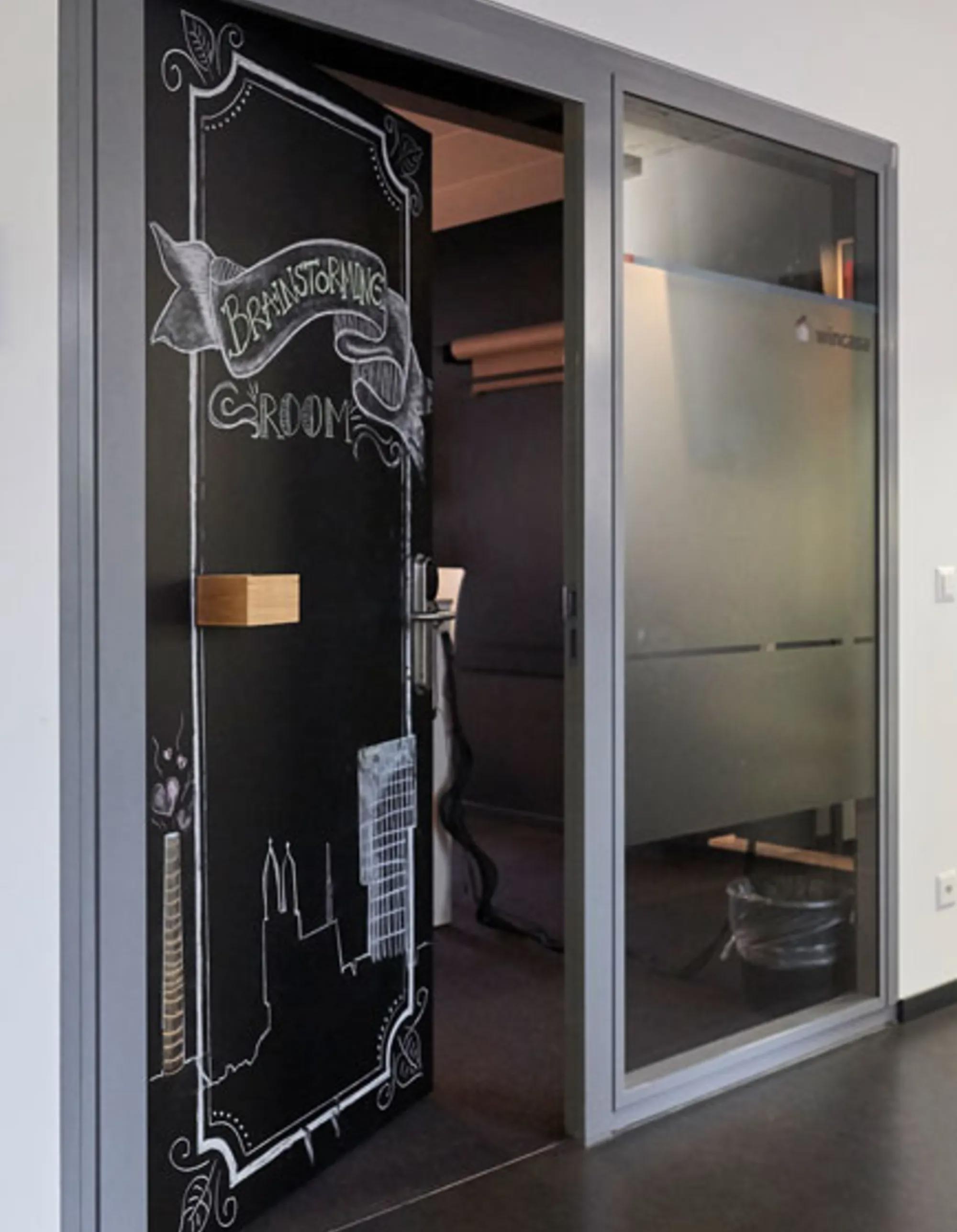
«The key ways of making adjustments to influence a building’s greenhouse emissions are optimisation, improving efficiency and substituting fossil fuels.»
Catching «the curve»
Another challenge lies in actually illustrating the forecast. In order to be able to make predictions for Swiss Prime Site’s real estate portfolio, the measures have to be defined at the building level and plotted on the time axis. Martin Pfenninger spreads out a graphic on the conference table: «I’m imagining a diagram that gives an overview of individual buildings, where, on the x-axis, you have the specific energy figure for the properties in kWh per m2 and, on the y-axis, the corresponding CO2 equivalent per m2. The size of the bubble can also be used to represent the absolute CO2 emissions or the area of the property.» A second diagram illustrating the CO2 reduction pathway takes the entire portfolio into consideration. The x-axis is a timeline, while the portfolio's CO2 emissions are represented on the y-axis. The downward curve for achieving the two-degree goal is depicted in the background, showing the target: far off in the future, in 2100, the CO2 emissions stand at zero. If the sustainability measures are effective, Swiss Prime Site will converge with the two-degree curve.
Simulations like these are extremely indicative – both at the level of the entire portfolio and for individual properties. Provided they are based on a data set of high quantitative and qualitative value. Everything rests on the quality of the data. And this has to be defined and collected. Pfenninger and his team now simply want to get started. Kick off and explore the issue together. Because another thing is clear: Swiss Prime Site is taking on a pioneering role here with Wincasa. There are no blueprints and no best practice to follow for guidance. At the end of the year, they want to be able to show how the portfolio stands in relation to the two-degree target. The expectations are great – at least as great as the task itself.
